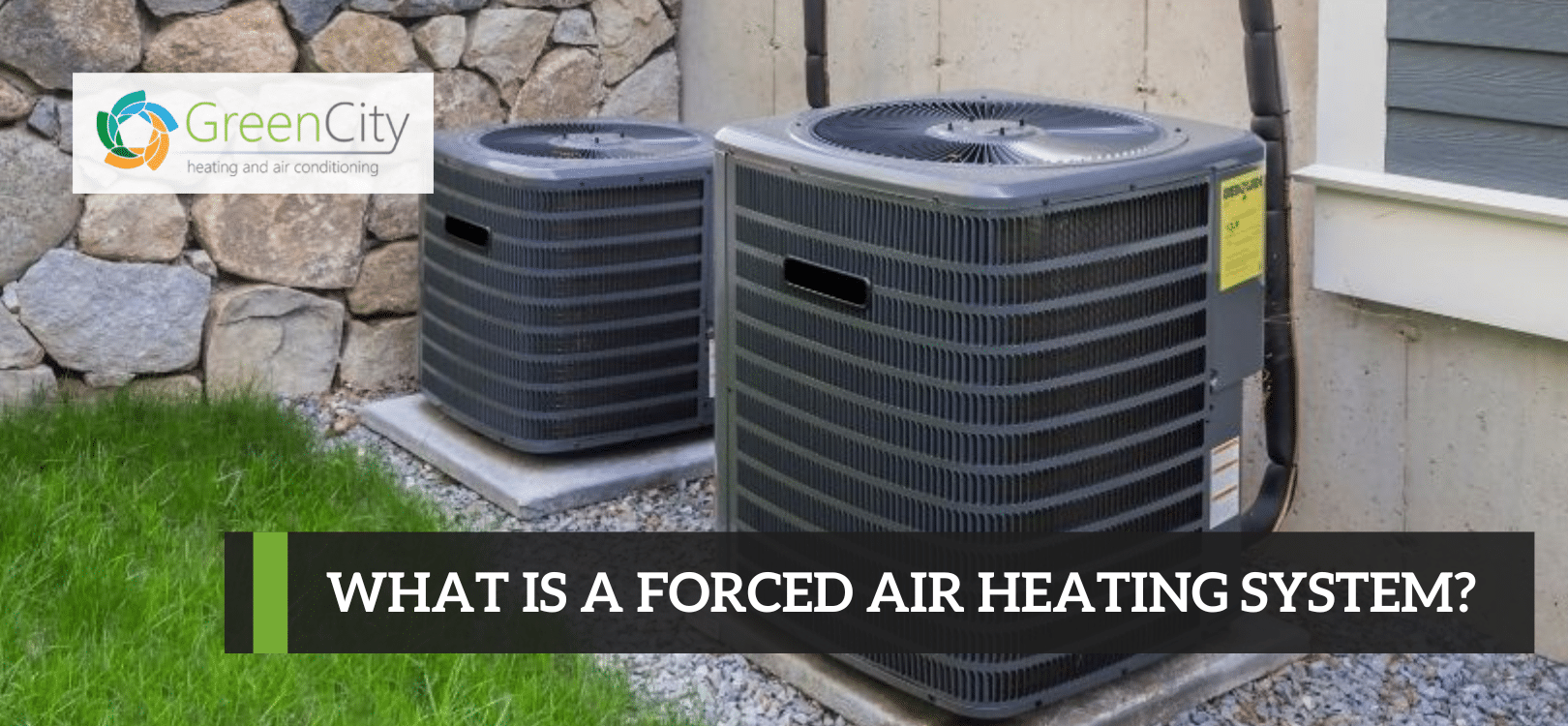
Heating your home is an important issue for any homeowner, especially as the winter weather sets in. Understanding the various options available is crucial to selecting the best system for your needs. One system that often comes into the conversation is the forced air heating system. Let’s go over what you need to know about this popular kind of home heating, from how it works to the benefits it may bring to your home, as well as what homeowners should think about.
What is a Forced Air Heating System?
A forced air heating system uses air as a heat transfer medium. This system heats the air in a furnace before using a blower to circulate it via a network of ducts and into rooms via heat registers or grills. The configuration is popular due to its low installation costs and ability to heat and cool an area with the same duct system and an air conditioning unit.
Why is this important to homeowners? The sort of heating system you choose has an impact on your comfort, energy expenses, and even the air quality in your home. For these reasons, knowing forced air heating is an important step toward making the best decisions for your home.
How Forced Air Heating Systems Work
A forced air heating system uses a simple yet efficient process to warm your home. Let us break it down step by step.
1. Heat Generation
Heat generation is the initial step in the process, which involves the furnace or heat pump producing heat. A furnace generates heat by either burning fuel or using electricity. A heat pump extracts heat from the air or ground via a refrigeration cycle. Regardless of the heat source, the purpose is to increase the temperature of the air before it enters the ducting.
2. Air Circulation
Once the air is heated, the blower fan turns on. It pulls air from the furnace or heat pump and directs it via the ducting. The blower fan runs at various speeds depending on the temperature set on the thermostat. It maintains a consistent flow of warm air throughout your home, allowing you to enjoy a comfortable interior atmosphere.
3. Air Distribution
Warm air passes via the ductwork to each room’s vents or registers. The vents are precisely located to ensure that the air is evenly distributed around your home, providing the ideal level of warmth. The warm air is released into the room, boosting the temperature and providing a comfortable environment.
4. Temperature Control
The thermostat is responsible for managing the temperature in your home. It measures the current temperature and compares it to the user’s desired temperature. If the temperature falls below the specified value, the thermostat instructs the furnace or heat pump to produce extra heat. Once the target temperature is attained, the thermostat signals the heating system to turn off, saving energy while maintaining a pleasant temperature.
The process repeats itself whenever the thermostat detects a deviation from the desired temperature. By constantly monitoring and adjusting the heat output, a forced air heating system ensures that your home remains warm and comfortable throughout the day.
Pros and Cons of Forced Air Heating Systems
Forced air heating systems offer a range of benefits, but they also have certain drawbacks. Let’s look at the benefits and drawbacks of using a forced-air heating system in your home.
Pros
- Quick and Even Heat Distribution: Forced air heating systems are excellent at quickly dispersing warm air throughout your home. The blower fan circulates heated air through the ductwork, ensuring that each area receives the appropriate level of warmth. This swift and equal heat dispersion brings immediate comfort on frigid winter days.
- Cooling Capability: Many forced air heating systems, including heat pumps, can offer cooling during the hot summer months. This dual capability eliminates the need for separate heating and cooling systems, resulting in reduced space and installation costs.
- Programmable Thermostats: Forced air heating systems work with programmable thermostats, which allow you to set different temperatures for different times of day. This feature saves electricity by automatically regulating the thermostat while you are away or sleeping.
- Improved Indoor Air Quality: Air filters are commonly used in forced air heating systems to remove dust, allergies, and other pollutants from the air. This can result in better indoor air quality and a healthier living environment, particularly for people who have respiratory diseases or allergies.
Cons
- Air Distribution Problems: In some circumstances, forced air heating systems may fail to evenly circulate warm air around your home. Poorly built or leaky ducting can cause temperature imbalances, making some rooms warmer or colder than others. To guarantee effective air circulation, ductwork should be maintained and inspected regularly.
- Noise: The operation of the blower fan in forced air heating systems can produce noise. While current systems are intended to reduce noise levels, some equipment may still emit audible sounds. Proper insulation and frequent maintenance can help lower noise levels.
- Air Quality Concerns: While forced air heating systems can help to enhance indoor air quality by filtering the air, they can also contribute to the spread of dust, allergies, and other particles if the ductwork is not properly maintained. To avoid contamination, it is vital to clean and change filters regularly.
- Energy Efficiency Considerations: Although forced air heating systems can be energy-efficient, several factors can reduce their effectiveness. Inadequate insulation, leaky ducts, and inefficient equipment can lead to energy loss and higher power bills. Regular maintenance and updates to more energy-efficient models can ease these worries.
Comparison with Other Heating Systems
Forced air heating systems differ significantly from other popular heating solutions, such as radiant floor heating and baseboard heating.
Radiant Floor Heating
Radiant heating uses heated coils or panels installed beneath the floor, in the ceiling, or on the walls to slowly warm the area from the ground up. This can be a more even, consistent, and frequently more efficient approach to heating a room, particularly in terms of heat loss and energy use.
Baseboard Heating
Baseboard heaters are often quiet and efficient, although they take longer to make a space pleasant than forced air systems. They are also more expensive to operate because they rely on electricity as a heat source.
Final Thoughts
Choosing the right heating system for your home is not a decision to be made lightly. Forced air systems offer efficiency, control, and added benefits for your home, but they are not without their considerations. By understanding how these systems work and what they can provide, homeowners can make informed choices that will keep them cozy and comfortable throughout the year.
Remember to look at the whole picture, including upfront costs, maintenance, and long-term environmental impact when making your decision. Your home’s heating system is an investment that should be both efficient and a good fit for your lifestyle and needs.
If you have any questions about forced air heating systems or need someone to install, maintain, or repair your system, don’t hesitate to contact Green City Heating and Air Conditioning. Our team of experienced technicians can help you find the best heating solution for your home and keep it running smoothly for years to come. Stay warm!



